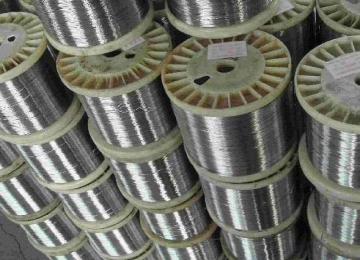
6J22 precision alloy is an alloy composed of nickel, chromium, aluminum, iron and other elements. Its resistivity is about three times higher than that of manganese-copper, with a lower temperature coefficient of resistance and low thermoelectric potential to copper, while also having good long-term stability of resistance and anti-oxidation properties. Due to its wide operating temperature range, it is suitable for making high-precision electronic components such as precision micro-resistance elements and strain gauges. It has been widely used in industrial production and scientific research.
The metallographic structure of 6J22 precision alloy
The metallographic structure of 6J22 precision alloy is single-phase austenite structure. This means that in 6J22 alloy, all grains have the same austenite structure and no other phases exist. Austenite is a type of ferrite with a hexagonal close-packed structure and has good plasticity and toughness. Therefore, 6J22 alloy has good processing performance and mechanical properties.
chemical composition of 6J22
Material | 6J22 | ||||||||
chemical composition | Cr | P | S | Ni | Al | C | Mn | Si | Fe |
19- 21.5 | ≦0.01 | ≦0.01 | margin | 2.7-3.2 | ≦0.04 | 0.5- 1.5 | ≦0.2 | 2-3 | |
Physical properties of 6J22
Material | 6J22 | |||
Physical properties | density | 8.3 g/cm3 | Resistivity(20℃) | 1.33μΩ·m |
melting point | 1372-1416℃ | Thermal Conductivity | 15 W/(m·K) | |
6J22 solid solution state, mechanical properties of the alloy at room temperature
Alloy status | tensile strength | Elongation |
6J22 | ≥690 | ≥18 |
6J22 precision alloy process principle
6J22 precision alloy is a nickel-iron alloy whose main components include nickel, iron, chromium, molybdenum and other elements. Its process principles mainly involve the following aspects:
Control of alloy composition: The composition control of 6J22 alloy is very critical. The content and proportion of various elements need to be controlled to ensure that the alloy has the required physical and chemical properties. For example, chromium and molybdenum in the alloy can improve the alloy’s corrosion resistance and oxidation resistance, while iron and nickel can affect the alloy’s magnetism and resistivity.
Powder metallurgy process: 6J22 alloy is usually prepared by powder metallurgy process. In this process, various metal powders are mixed in a certain proportion and sintered under high temperature and high pressure to form a uniform alloy billet. This process can ensure the composition uniformity and microstructural stability of the alloy.
Heat treatment process: The heat treatment process of 6J22 alloy is also very important. During the heat treatment process, the alloy billet will undergo a series of heating, holding and cooling processes to adjust the grain structure and physical properties of the alloy. For example, by controlling the heat treatment temperature and time, the grain size of the alloy can be made smaller and the hardness and strength of the alloy can be improved.
In short, the process principle of 6J22 precision alloy involves the control of alloy composition, powder metallurgy process and heat treatment process. The optimization and control of these processes can ensure that the alloy has the required physical and chemical properties to meet the needs of different application fields.
Performance characteristics of 6J22 precision alloy
The main components of 6J22 precision alloy are nickel, chromium, aluminum and iron, and has the following performance characteristics:
High resistivity: The resistivity of 6J22 precision alloy is about three times higher than that of manganese copper, so it can be used to make high-precision electronic components.
Low temperature coefficient of resistance: 6J22 precision alloy has a low temperature coefficient of resistance, which means that its resistance value changes less at different temperatures.
Low thermoelectric potential to copper: 6J22 precision alloy has a low thermoelectric potential to copper, which means that there will not be too much thermoelectric effect during use.
Good long-term stability of resistance: 6J22 precision alloy has good long-term stability of resistance and can maintain stable performance for a long time.
Good oxidation resistance: 6J22 precision alloy has good oxidation resistance and can be used in high temperature environments for a long time.
Wide operating temperature range: 6J22 precision alloy has a wider operating temperature range than manganese copper and can be used in a wider temperature range.
Application scope of 6J22 precision alloy
The application scope of 6J22 precision alloy mainly includes the following two aspects:
Making precision resistance components: 6J22 alloy has high resistivity and temperature coefficient, so it is suitable for making precision resistance components in various measuring instruments and meters. For example, resistor sheets made of 6J22 alloy can be used to make precision measuring instruments such as resistor boxes and bridges.
Making micro-resistance components and strain gauges: 6J22 alloy has good processing performance and mechanical properties, so it is suitable for making precision micro-resistance components and strain gauges. For example, micro resistors made of 6J22 alloy can be used to make micro sensors, micro electronic components, etc., while strain gauges can be used to make pressure sensors, strain measuring instruments, etc.
In addition, 6J22 alloy can also be used to make high-precision wires, springs, springs and other components, as well as high-precision instruments and equipment in aviation, aerospace, national defense and other fields.

